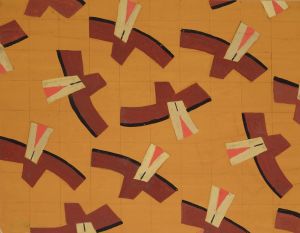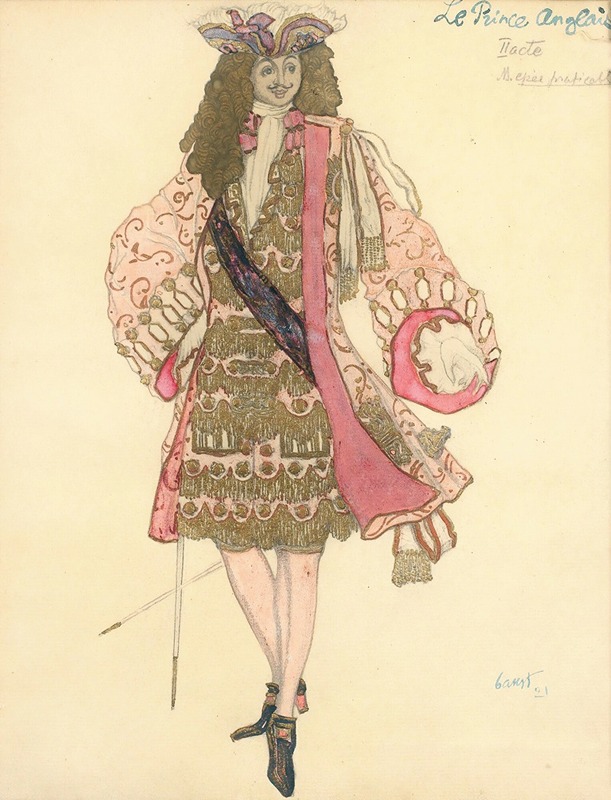
Costume Design For Act Ii Of Le Prince Anglais
A hand-painted replica of Léon Bakst’s masterpiece Costume Design For Act Ii Of Le Prince Anglais, meticulously crafted by professional artists to capture the true essence of the original. Each piece is created with museum-quality canvas and rare mineral pigments, carefully painted by experienced artists with delicate brushstrokes and rich, layered colors to perfectly recreate the texture of the original artwork. Unlike machine-printed reproductions, this hand-painted version brings the painting to life, infused with the artist’s emotions and skill in every stroke. Whether for personal collection or home decoration, it instantly elevates the artistic atmosphere of any space.
Léon Bakst, a renowned Russian painter and scene and costume designer, created the "Costume Design for Act II of Le Prince Anglais" as part of his extensive work in the early 20th century. Bakst is best known for his association with the Ballets Russes, a groundbreaking ballet company founded by Sergei Diaghilev. His designs were instrumental in shaping the visual style of the company, which was celebrated for its innovative and avant-garde productions.
"Le Prince Anglais" is one of the many productions for which Bakst provided costume designs. While specific details about this particular work are limited, Bakst's contribution to theater and ballet is well-documented. His designs were characterized by their vibrant colors, intricate patterns, and a deep understanding of the characters and narratives they were meant to enhance. Bakst's work often drew inspiration from a wide range of sources, including Russian folklore, Orientalism, and classical antiquity, which he skillfully blended to create visually stunning and thematically rich costumes.
Bakst's collaboration with the Ballets Russes began in 1909, and he quickly became one of the most influential designers of the company. His work on productions such as "The Firebird," "Scheherazade," and "The Sleeping Princess" showcased his ability to transform the stage into a dynamic and immersive world. His designs not only complemented the choreography and music but also played a crucial role in the storytelling process, helping to convey the mood and atmosphere of each production.
The costume design for "Le Prince Anglais" would have likely followed Bakst's signature style, incorporating bold colors and elaborate detailing. His approach to costume design was not merely about creating visually appealing garments but also about enhancing the overall theatrical experience. Bakst believed that costumes should be an extension of the character, reflecting their personality, status, and role within the story.
Bakst's influence extended beyond the Ballets Russes, impacting fashion and interior design during the early 20th century. His work was admired by contemporaries and continues to be studied by designers and historians today. The vividness and originality of his designs have left a lasting legacy, and his contributions to the arts are celebrated for their creativity and impact on modern design.
While specific information about "Costume Design for Act II of Le Prince Anglais" is scarce, it is clear that Léon Bakst's work played a significant role in the evolution of costume design in the performing arts. His ability to blend artistic innovation with theatrical functionality set a new standard for stage design, influencing generations of designers who followed. Bakst's legacy is evident in the continued appreciation and study of his work, which remains a testament to his artistic vision and contribution to the world of theater and ballet.





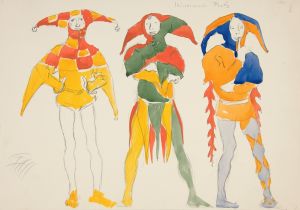
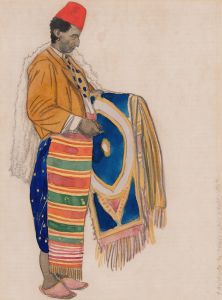
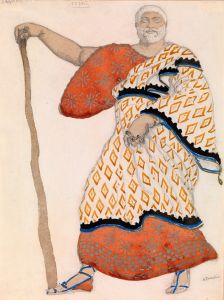
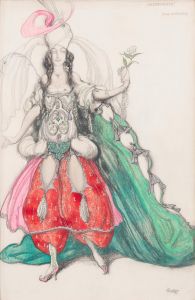
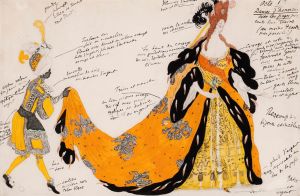
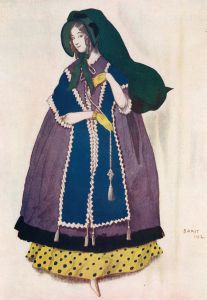
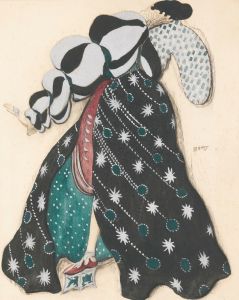
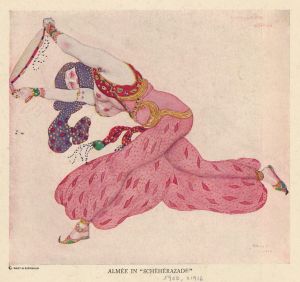
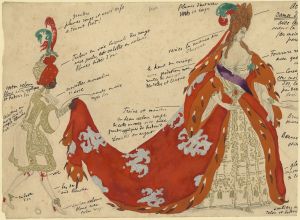
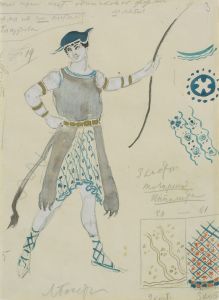
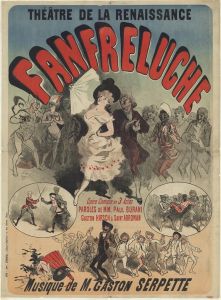
![Designs for theater with black-framed proscenium and boldly colored settings.] [Study for stage light wall decoration, possibly for Caf ̌Crillon …..](/imgs/249420/s/winold-reiss-designs-for-theater-with-blackframed-proscenium-and-boldly-colored-settings-study-for-stage-light-wall-decoration-possibly-for-caf-crillon--fccff049.jpg)
